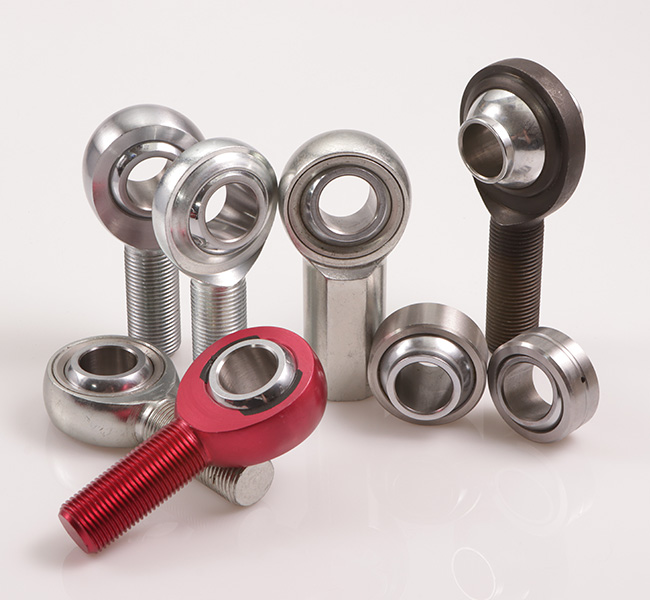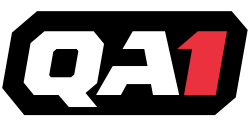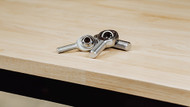ROD END SELECTION: LOAD RATINGS ARE NOT THE IDEAL WAY TO PICK THE BEST ROD END
With rod ends available in a variety of shapes, sizes, materials, configurations, coatings, and options, it can be a challenge to identify what style is correct for a specific project. Many look to a rod end’s load rating as an indicator, but as we detail below, other considerations should be made outside of strength alone.

WEAR
Have you ever seen a piece of equipment where the rod ends continually wear out even though the load rating meets or exceeds the machine’s requirements? Unfortunately, this is all too common and QA1 has helped thousands of individuals and companies identify the rod end that best supports their requirements. This results in less downtime, lower maintenance costs, and a better overall customer experience.
2-piece rod ends are common in many motion control systems. Their unique “Mohawk” body construction provides great articulation while maintaining high load ratings. Although the load rating is high, wear can be a factor in some applications. Many find better longevity from a QA1 3-piece design due to its ball to race conformity. The body, being slightly wider, sacrifices some misalignment angle while providing more surface area for the ball to ride on. This increased surface area extends the service life of this part.
MISALIGNMENT
Misalignment is another important factor when qualifying a rod end for an application. Do you know how much misalignment your design requires? Each rod end series QA1 offers has a specified amount of misalignment capability. Articulation past this specification will result in abnormal wear and/or failure of the rod end joint.
Whether your misalignment needs are moderate to extreme, QA1 has the widest selection of rod ends including high misalignment versions and accessory high misalignment spacers depending on your needs.
MATERIAL
QA1 offers a wide selection of rod end materials to provide variety to meet demand across many platforms and industries. QA1 offerings were developed using various materials to best accommodate properties most important for rod end use, such as strength, environmental conditions, etc. For example, some applications are used in highly corrosive environments, lending themselves to materials such as stainless steel or zinc plated rod ends.
Weight can also be a consideration depending on the application. In such instances, customers will seek out our ultra-lightweight aluminum rod ends. A great example of this is the use of these rod ends in the high-performance racing market, providing end-users every opportunity to lighten their race cars and improve performance.
OVERALL LOAD RATING
Last, but certainly not least, load ratings should not be forgotten. Although it is one of many considerations when choosing rod ends, it is an important one. A benefit of the QA1 product line is the variety of materials that we offer throughout our rod end series. This allows you to choose the construction that meets your misalignment or wear needs while identifying a material that will support your load rating requirements.
To illustrate this, several of our rod ends are available in either carbon steel or alloy materials. The carbon steel is more of an economical / lower load rating alternative to the ultra-high-strength alloy options.
SUMMARY
Selecting rod ends for an application can have many considerations. With QA1’s nearly 30-years of experience, we can assist in making sure the correct rod ends are selected for your unique application. And if we do not offer a rod end currently that meets your requirements, we can look at custom design and production as well.
With the widest selection, on-hand inventory, and commitment to quality, as well as design and manufacturing capabilities, we are confident in our ability to service your specific needs.

